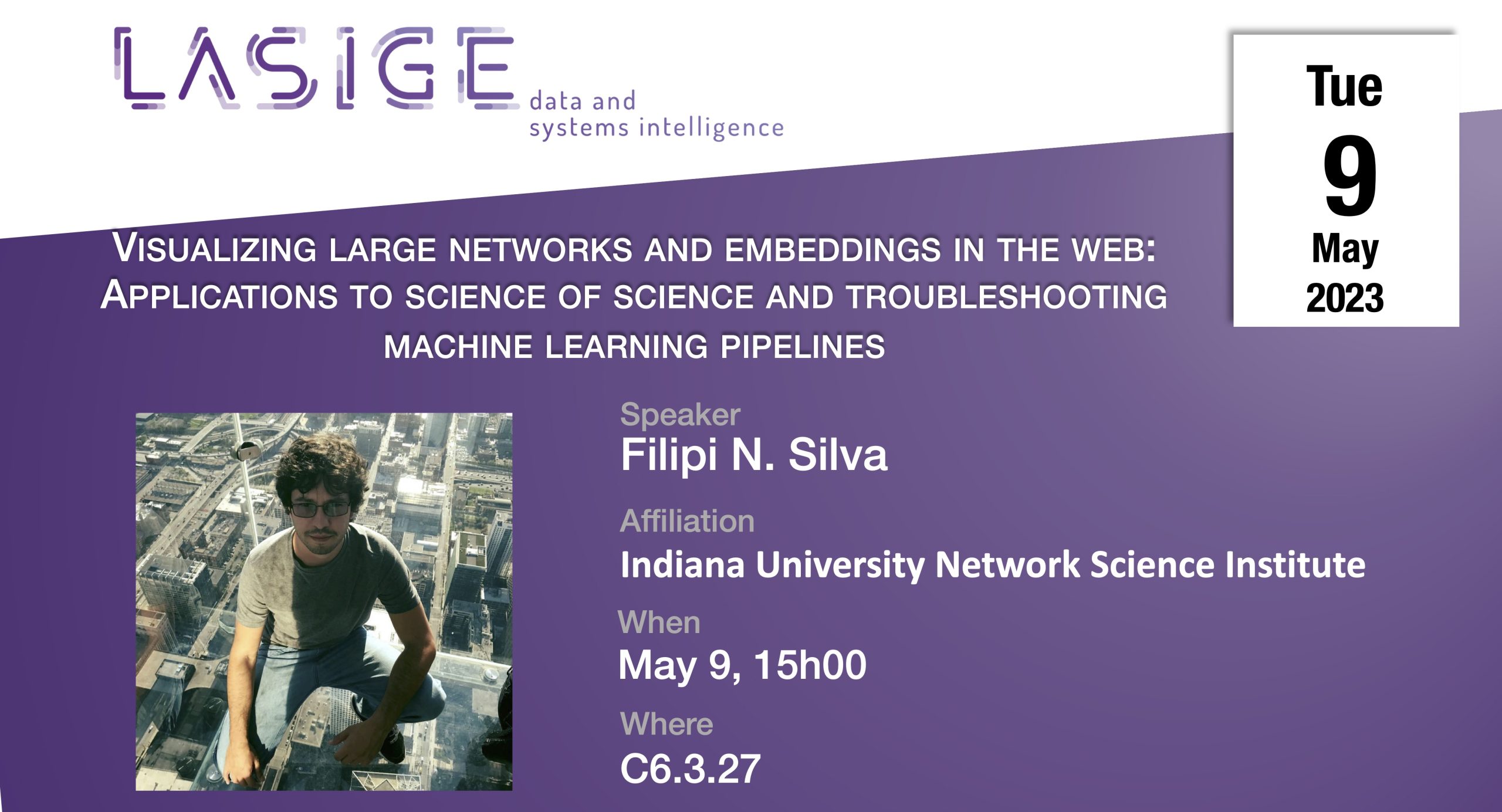Title: Visualizing large networks and embeddings in the web: Applications to science of science and troubleshooting machine learning pipelines
Speaker: Filipi Nascimento Silva (Indiana University Network Science Institute)
When: May 9, 15h00
Where: 6.3.27
(Coffee break included)
Abstract: Visualization is key for understanding intricate systems and complex machine learning pipelines. We at CNets and IUNI have been developing Helios-Web, a groundbreaking web-based visualization platform tailored for large networks and embeddings. Helios-Web enables real-time visualization of million-node networks, offering users valuable insights and easy interpretation of results. Accessible through your web browser, this versatile tool has a wide range of applications. We will demonstrate the of the tool through three compelling applications. The first application showcases its potential in the Science of Science field, where publications, authors, and scholarly data will be presented in interactive 2D and 3D maps. The second application highlights its integration with the OSoMe platform, visualizing Twitter networks based on queries such as hashtags and offering real-time insights into bot influence. Lastly, we exemplify Helios-Web’s utility in exploring neural network embeddings and how it was instrumental in developing and understanding our robustness modularity approach.
Bio: Dr. Filipi N. Silva is a Research Scientist at the Indiana University Network Science Institute. He earned his Ph.D. in Physics from the São Carlos Institute of Physics, University of São Paulo. Dr. Silva’s primary research interests encompass the development and implementation of innovative techniques for the analysis, modeling, and understanding of real-world systems. His expertise lies in the integration of complex networks, machine learning, and data visualization. Dr. Silva’s interdisciplinary approach has been applied to diverse scientific domains such as bioinformatics, text analysis, science of science, information science, and urban networks. His current research endeavors include assessing the robustness of the community structure in networks and developing an interactive network visualization tools for researchers to explore the structure and dynamics of scientific fields over time.
